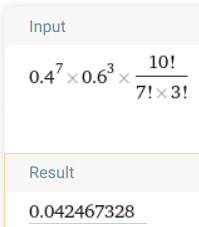The lady tasting tea, vaccines and the damage dogmatic doctors do
Doctors ignore basic statistics and warnings from a 1913 Nobel laureate thus causing death and devastation
The lady tasting tea
The lady (Muriel Bristol) claimed to be able to tell whether the tea or the milk was added first to a cup. Ronald Fisher proposed to give her eight cups, four of each variety, in random order. One could then calculate the probability of her correctly identifying the specific number of cups, just by chance. So if the lady was just guessing, the probability of her correctly identifying the cups just by chance is 1.4%.
1 chance out of 70 ≈ 1.4%. So Fisher considered this probability sufficient to evaluate the lady’s claim. If the lady correctly identified the cups, there is only a 1.4% probability that she was just guessing. There was a 100-1.4=98.6% probability she had the ability to taste the difference.
In other words, the lady's ability was evaluated at a 1.4% significance level.
Cardiac arrest deaths caused by the Pfizer mRNA COVID-19 vaccines
Consider Pfizer’s COVID-19 mRNA vaccine trial. Pfizer found 4 cardiac arrest deaths in the vaccine arm and 1 cardiac arrest death in the placebo arm. We can calculate the probability of this being a chance event.
It is 1.5%. So very similar to the lady tasting tea case. Similarly, we therefore have a 98.5% probability that the vaccine CAUSED these deaths and only a 1.5% probability that it was a chance occurrence.
In other words, the Pfizer mRNA COVID-19 vaccine’s ability to kill 3 out of 21926 vaccine recipients by causing cardiac arrest, was evaluated at a 1.5% significance level.
Or, killing about 1 in 7300 people while potentially preventing only one COVID-19 death in 22000 people.
Pharma captured vaccine regulators around the world, the $60 billion Pharma corrupted medical establishment and the vast majority of doctors have ignored this basic finding and are administering these deadly vaccines with devastating consequences.
Bell’s palsy caused by the mRNA COVID-19 vaccines
In an even more egregious case, the FDA and doctors have been trying to hide the fact that COVID-19 vaccines cause Bell’s palsy.
Renoud et al. write:
During the pivotal phase 3 clinical trials of mRNA COVID-19 vaccines, several cases of facial paralysis were observed in the vaccine groups (7 of 35 654) compared with 1 case among people who received placebo (1 of 35 611).1,2 Although a causal relationship could not be established from clinical trials, …
So let us again calculate the probability of this outcome being a chance occurrence.
That is 0.007%. So, we have a 99.993% probability that the vaccines CAUSED these cases of Bell’s palsy and only a 0.007% probability that it was a chance occurrence.
The FDA was caught by their own VRBPAC committee member, Ofer Levy.
Therefore, the observed incidence of Bell's palsy in the vaccine arms is between 3·5-times and 7-times higher than would be expected in the general population. This finding signals a potential safety phenomenon and suggests inaccurate reporting of basic epidemiological context to the public.
Diplomatic way of saying "the FDA lied to the public".
How do doctors create food allergy in children?
How do researchers create peanut allergy in sheep in the laboratory?
They immunize (vaccinate) sheep with peanut extract + aluminum adjuvant.
sheep were sensitised separately with a crude PN extract and OVA. The immunisation protocol involved 3 subcutaneous (s.c.) injections at 2-week intervals and a 4th ‘boost’ injection after a rest period of 4 weeks. Each injection comprised either 100 µg of solubilised crude PN extract or 100 µg of OVA prepared in a total of 1 ml sterile saline with 50 µl of a commercial aluminium adjuvant (alum); Rehydragel ® LV- Aluminium hydroxide (Reheis Inc/NJ, USA).
How do doctors create food allergy in children? The same way they do in laboratory sheep. They inject food protein contaminated, aluminum adjuvanted vaccines.
The US National Academy of Medicine reports
Allergens in Vaccines, Medications, and Dietary Supplements
Physicians and patients with food allergy must consider potential food allergen exposures in vaccines, medications, and dietary supplement prod- ucts (e.g., vitamins, probiotics), which are not regulated by labelling laws. Also, excipients (i.e., substances added to medications to improve various characteristics) may be food or derived from foods (Kelso, 2014). These include milk proteins; soy derivatives; oils from sesame, peanut, fish or soy; and beef or fish gelatin. The medications involved include vaccines; anesthetics; and oral, topical, and injected medications. With perhaps the exception of gelatin, reactions appear to be rare overall, likely because little residual protein is included in the final preparation of these items. The specific risk for each medication is not known.
Vaccines also may contain food allergens, such as egg protein or gelatin.
Doctors are taught in medical school (pg.158) that injecting proteins causes the development of allergies and allergic asthma directed at those proteins.
A guinea pig can be sensitized by intramuscular injection of an antigen, say OVA (ovalbumin). Its immune system responds by producing antibody to OVA, including (but not exclusively) IgE. Some of this circulating IgE will be fixed onto mast cells in various tissues, including the vasculature and respiratory tract. Three weeks later, the same animal can be challenged either with an intravenous dose of OVA or by exposure to an aerosol containing OVA. Following IV injection, the animal will rapidly develop severe vascular shock and die within a few minutes (the combination of venule constriction and capillary dilation results in pooling of blood in the peripheral circulation and a drastic drop in blood pressure). If exposed to the aerosol, it will equally rapidly die from bronchial constriction, an experimental model for human asthma.
Doctors inject vaccines, biologics and other injections contaminated with thousands of plant/animal/fungal/human/aeroallergen proteins thus predictably causing the explosion of allergies, asthma and autoimmune disorders.
Dr. Charles Richet was trying to vaccinate dogs to protect them (prophylaxis) against anemone poison. He discovered that the vaccine made the disease worse (anti-protection). He had to coin a new word - anaphylaxis.
Nobel laureate, Dr. Richet therefore warned in 1913, to never inject alien proteins into humans.
We are so constituted that we can never receive other proteins into the blood than those that have been modified by digestive juices. Every time alien protein penetrates by effraction, the organism suffers and becomes resistant. This resistance lies in increased sensitivity, a sort of revolt against the second parenteral injection which would be fatal. At the first injection, the organism was taken by surprise and did not resist. At the second injection, the organism mans its defences and answers by the anaphylactic shock.
Please send this article to your doctor and ask them a simple question. Why? Why do they still inject alien proteins into humans?
Probability calculation basics
The probability calculation used above are the same as the ones used to calculate coin toss probabilities.
For a simple coin toss example, we would perform the calculation as follows:
Computing probability of say a 7 heads, 3 tails outcome of 10 trials of a fair coin:
Where: 0.5 is the probability of a head or tail outcome of a fair coin.
For an unfair coin, say probability of head outcome = 0.4 and tail outcome = 0.6, we would have:
Latest publication: Coauthored with Prof. Kounis, Dr. Robert Malone (who invented the mRNA vaccine) and others.










I have a very basic question. What is the evolutionary purpose behind anaphylaxis?
I understand this:
"At the first injection, the organism was taken by surprise and did not resist. At the second injection, the organism mans its defences and answers by the anaphylactic shock."
But I don't understand why throat-closing symptoms would improve your odds of survival or reduce the threat you were sensitized to. For example, why does your blood pressure drop? Why constrict bronchioles?
"...The animal will rapidly develop severe vascular shock and die within a few minutes...
- combination of venule constriction and
- capillary dilation
- results in pooling of blood in the peripheral circulation
- drastic drop in blood pressure.
If exposed to the aerosol, it will equally...
- rapidly die from
- bronchial constriction."
The calculated probabilities appear to be incorrect. For 4 vs. 1 events with large nearly-equal populations, the R language gives a p-value of 0.37 or 37%, far from the 1.5% claimed above.
prop.test(c(1, 4), c(21920,21920))
For 7 vs. 1 event the p-value is 0.077.
R is well vetted, and the documentation page cites references.
https://www.rdocumentation.org/packages/stats/versions/3.6.2/topics/prop.test
There is even an online version of R: https://www.mycompiler.io/new/r